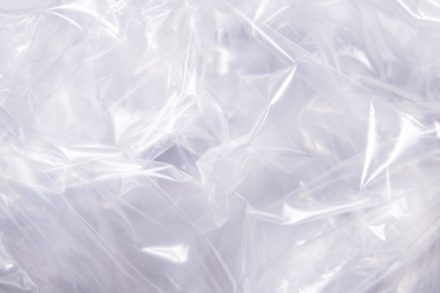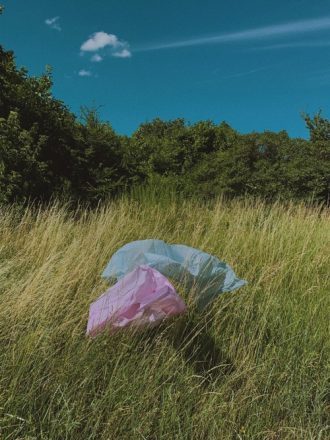Smart Key: Towards ever more eco-responsible packaging The - Première Vision Paris - Denim Première Vision - Première Vision New York
Unlock the secrets of eco-responsible materials with our Smart Keys. Focusing on questions around eco-design, the Smart Keys analyse the solutions available to improve and enlighten your sourcing. Today, the spotlight is on packaging.
Eco-responsible packaging: how can we package clothing without harming the environment?
Whether functional or a signature item, packaging plays a number of roles during a product’s lifespan. Polybag, dust bag, tissue-paper, a branded box, a bag bearing the label’s name or a box for e-commerce shipping: an item will come into contact with multiple materials before being worn.

The polybag, invisible and omnipresent
The ultimate in discreet packaging, this bag is most often made from Low Density Polyethylene (LDPE), which has the advantage of being flexible, transparent, light, waterproof and tearproof. Characteristics that explain why an estimated 180 billion polybags are made each year for the fashion industry, only 15% of which are recycled.
While it is tempting to think that this problem could be resolved by simply eliminating polybags, they do have many uses.
They facilitate product identification in warehouses or shop storerooms and meet a real need for garment protection, insulating them from the damp, reducing the creasing and rubbing that could cause colours to run or fabrics to pill. If they were eliminated, a garment would run the risk of being damaged and becoming impossible to sell, resulting in a much larger environmental and economic impact.

E-commerce, multiplying packaging needs
Whether they are sent out in boxes or plastic, the boom in e-commerce has resulted in an increased production of packaging for shipping. This trajectory is forecast to rise by 10% each year until 2024, making fashion the number one sector for online sales worldwide.
Boxes are often poorly adapted to the size of their content but are more often recycled, while opaque plastic bags are often better suited to the volume of clothing thus optimising transport, but are also often made from LDPE, which is still not widely recycled.

Ecological packaging, the challenge of eco-design
The packaging life cycle has been examined in detail in order to find areas for improvement, and promising innovations are emerging. However, these must be accompanied by a change in behaviour and improved processing systems at end of life, in order to meet all their potential.
There are two prime examples of solutions which may not be quite the eco-success story they appear: the fabric tote bag and bio-sourced plastics.

The tote bag, a victim of its own success
Promoted as a virtuous alternative to plastic bags, this cotton pouch can be used as a shopping bag and also as a general handbag to demonstrate a certain affiliation with a label. A characteristic which means that it has developed into a company accessory used to enhance the client experience rather than a functional form of packaging.
It has succumbed to a rebound effect, like plastic in its glory days, with the over-consumption it has generated.
The volume of shopping bags has not diminished with the emergence of its reusable cotton equivalent, and today tote bags can be found gathering dust in wardrobes, or filling textile recycling bins. Often screen-printed, depending on the technique used, whether water-based inks or synthetic resins, the decoration can limit its recycling potential.

Bio-plastics are not yet fantastic
To wean themselves off fossil fuels, plastics are turning towards bio-sourced components, with materials created notably from the fermentation of corn, sugar cane or soya.
Although they are not widely recycled as of yet, they can be disposed of at the end of their life as biodegradable or compostable materials. While they do allow some independence from the oil industry, their use is not without incidence, particularly as they are not automatically biodegradable.
Materials have to pass tests and be certified in order to claim these qualities. These analyses are used to identify under what specific conditions and in what environments they can biodegrade.
Compostability, which is becoming a widespread claim, consists of two categories, industrial and domestic. The industrial version has the advantage of being able to process substantial volumes, but collection and processing plants are few and far between, so the products are often buried or incinerated instead. Some packaging is labelled as suitable for domestic composting but this is less common and good composting practices must be respected. Poorly managed, these alternatives can also generate micro-plastics.
Although reams of regulations on packaging are entering their application phase, until this results in a substantial reduction in their impacts, how can we be proactive and what initiatives can be put in place?

Smart Key #1 – Seek moderation
Reducing the use of polybags is the first step. Remove them from samples sent by suppliers for quality control purposes, and on large dark and solid items which are less fragile. The next step is to optimise packaging by folding items as much as possible in order to reduce the size of the polybag and better adapt the volume and contents of shipping boxes.
Common sense options should be explored: redesigned, more compact, with cardboard bands used to contain product selections sent to stores, and the use of paper bags instead of polybags.
In terms of cardboard and paper, ensure they come from sustainably managed forests with FSC and PEFC certification, which can also attest to mixed compositions where some or all of the content is entirely recycled.
Smart key #2 – Extend useful lifespan
Even if it is made from the most responsible materials imaginable, packaging, like garments, will also have a substantial environmental impact if it is only used once.
In recent years, reusable packaging solutions have emerged, such as Hipli, Repack and Opopop, inviting the consumer to send their packaging back. Once the package has been emptied, it just has to be folded and placed in a letter box in order to be collected, cleaned and repaired, if necessary, then used for another delivery. Extending the life span of packaging generates a substantial reduction in emissions compared to packing that is destined for a single use. Even though this reusable packaging makes an extra journey, sending it back empty allows it to maintain its advantage over classic packaging.

Smart Key #3 – Insist on circularity
Cardboard and paper are the most widely-used recyclable packaging, even if their circularity is not unlimited; estimates suggest they can be recycled up to five times.
The recycling of LDPE in polybags has yet to reach those levels. The only recycling comes from production waste and is little developed. Collection and processing circuits differ from country to country, and even between regions.
The situation is tending to improve but there is still a need for industrial investment and the participation of local authorities.
Another possibility is the optimisation of related industrial waste, such as agricultural by-products to develop bio-plastics and new papers. This would add value to waste products, reducing the use of arable land, which can lead to pressure on cultivated areas.
Packaging reflects a worldwide systemic problem, namely the intensive (over)use of resources, for a particularly short lifespan in this case. All choices have impacts and by looking at the various available solutions, the best possible compromise can be found in order to combine convenience, identity and eco-responsibility.
Sources :
- Point d’étape sur les projets de recherche et développement et les innovations – Citeo – Novembre 2020
- Les polybags – Livre blanc – Fashion Green Hub – 2021
- The drive toward sustainability in packaging— Beyond the quick wins – McKinsey Janvier 2020
- The rise of reusable packaging april 2021 – Understanding the impact and mapping a path to scale – Fashion for good – Avril 2021
- Compostage domestique et industriel des sacs plastiques et des sacs en papier – ADEME, OrgaNeo, RITTMO Agroenvironnement, Microhumus – Juin 2019
Learn more about sustainability with our Smart Keys series:
- The hidden face of cotton
- Cellulosic materials
- The mysteries of chemistry
- Biodegradability
- Traceability
- Alternative plant-based materials
- Polyester recycling
- Ecological and ethical metal accessories
- The secrets of sports technical fabrics
